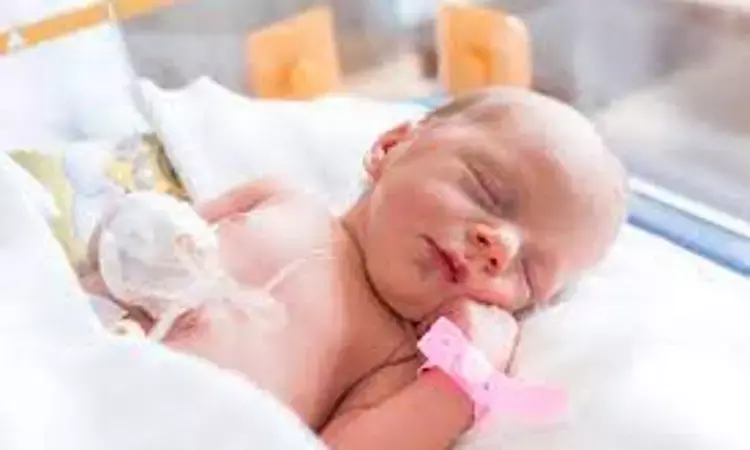- Home
- Medical news & Guidelines
- Anesthesiology
- Cardiology and CTVS
- Critical Care
- Dentistry
- Dermatology
- Diabetes and Endocrinology
- ENT
- Gastroenterology
- Medicine
- Nephrology
- Neurology
- Obstretics-Gynaecology
- Oncology
- Ophthalmology
- Orthopaedics
- Pediatrics-Neonatology
- Psychiatry
- Pulmonology
- Radiology
- Surgery
- Urology
- Laboratory Medicine
- Diet
- Nursing
- Paramedical
- Physiotherapy
- Health news
- Fact Check
- Bone Health Fact Check
- Brain Health Fact Check
- Cancer Related Fact Check
- Child Care Fact Check
- Dental and oral health fact check
- Diabetes and metabolic health fact check
- Diet and Nutrition Fact Check
- Eye and ENT Care Fact Check
- Fitness fact check
- Gut health fact check
- Heart health fact check
- Kidney health fact check
- Medical education fact check
- Men's health fact check
- Respiratory fact check
- Skin and hair care fact check
- Vaccine and Immunization fact check
- Women's health fact check
- AYUSH
- State News
- Andaman and Nicobar Islands
- Andhra Pradesh
- Arunachal Pradesh
- Assam
- Bihar
- Chandigarh
- Chattisgarh
- Dadra and Nagar Haveli
- Daman and Diu
- Delhi
- Goa
- Gujarat
- Haryana
- Himachal Pradesh
- Jammu & Kashmir
- Jharkhand
- Karnataka
- Kerala
- Ladakh
- Lakshadweep
- Madhya Pradesh
- Maharashtra
- Manipur
- Meghalaya
- Mizoram
- Nagaland
- Odisha
- Puducherry
- Punjab
- Rajasthan
- Sikkim
- Tamil Nadu
- Telangana
- Tripura
- Uttar Pradesh
- Uttrakhand
- West Bengal
- Medical Education
- Industry
More than 80% of kids with low risk for sepsis received antibiotics, finds study

More than 80% of kids with low risk for sepsis received antibiotics, finds a study published in Pediatrics.
Multiple strategies are used to identify newborn infants at high risk of culture-confirmed early-onset sepsis (EOS). Delivery characteristics have been used to identify preterm infants at the lowest risk of infection to guide the initiation of empirical antibiotics. The researcher's objectives were to identify term and preterm infants at the lowest risk of EOS using delivery characteristics and to determine antibiotic use among them.
This was a retrospective cohort study of term and preterm infants born January 1, 2009, to December 31, 2014, with blood culture with or without cerebrospinal fluid culture obtained ≤72 hours after birth. Criteria for determining low EOS risk included: cesarean delivery, without labour or membrane rupture before delivery and no antepartum concern for intraamniotic infection or no reassuring foetal status. The researchers determined the association between these characteristics, the incidence of EOS, and antibiotic duration among infants without EOS.
The results of the study are:
Among 53 575 births, 7549 infants (14.1%) were evaluated and 41 (0.5%) of those evaluated had EOS. Low-risk delivery characteristics were present for 1121 (14.8%) evaluated infants, and none had EOS. Whereas antibiotics were initiated in a lower proportion of these infants (80.4% vs 91.0%, P < .001), the duration of antibiotics administered to infants born with and without low-risk characteristics was not different (adjusted difference 0.6 hours, 95% CI [−3.8, 5.1]).
Thus, the researchers concluded that the risk of EOS among infants with low-risk delivery characteristics is extremely low. Despite this, a substantial proportion of these infants are administered antibiotics. Delivery characteristics should inform empirical antibiotic management decisions among infants born at all gestational ages.
Reference:
Delivery Characteristics and the Risk of Early-Onset Neonatal Sepsis by Dustin D. Flannery, et al. published in the Pediatrics.
https://publications.aap.org/pediatrics/article-abstract/doi/10.1542/peds.2021-052900/184465/Delivery-Characteristics-and-the-Risk-of-Early?redirectedFrom=fulltext
Dr. Shravani Dali has completed her BDS from Pravara institute of medical sciences, loni. Following which she extensively worked in the healthcare sector for 2+ years. She has been actively involved in writing blogs in field of health and wellness. Currently she is pursuing her Masters of public health-health administration from Tata institute of social sciences. She can be contacted at editorial@medicaldialogues.in.
Dr Kamal Kant Kohli-MBBS, DTCD- a chest specialist with more than 30 years of practice and a flair for writing clinical articles, Dr Kamal Kant Kohli joined Medical Dialogues as a Chief Editor of Medical News. Besides writing articles, as an editor, he proofreads and verifies all the medical content published on Medical Dialogues including those coming from journals, studies,medical conferences,guidelines etc. Email: drkohli@medicaldialogues.in. Contact no. 011-43720751


